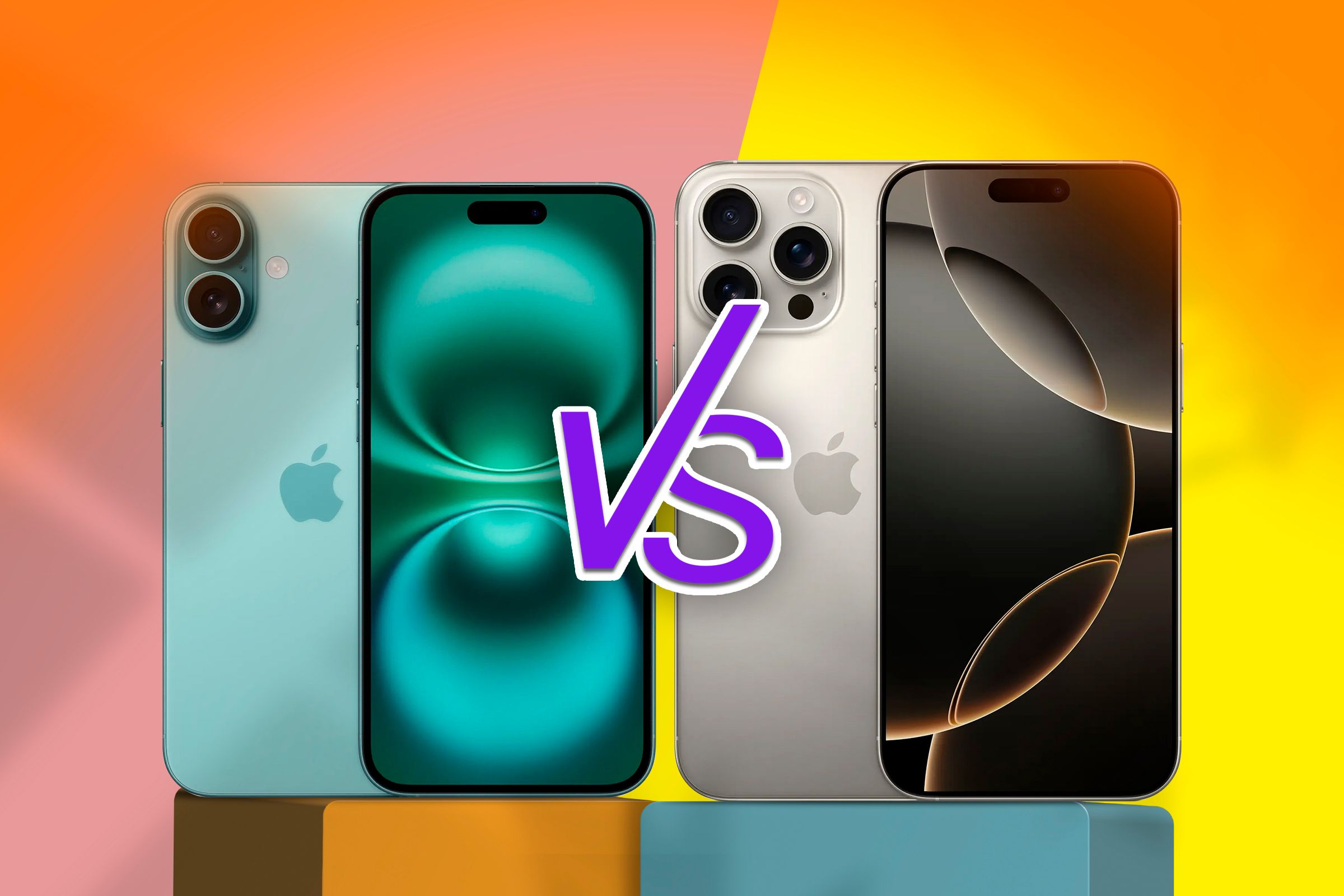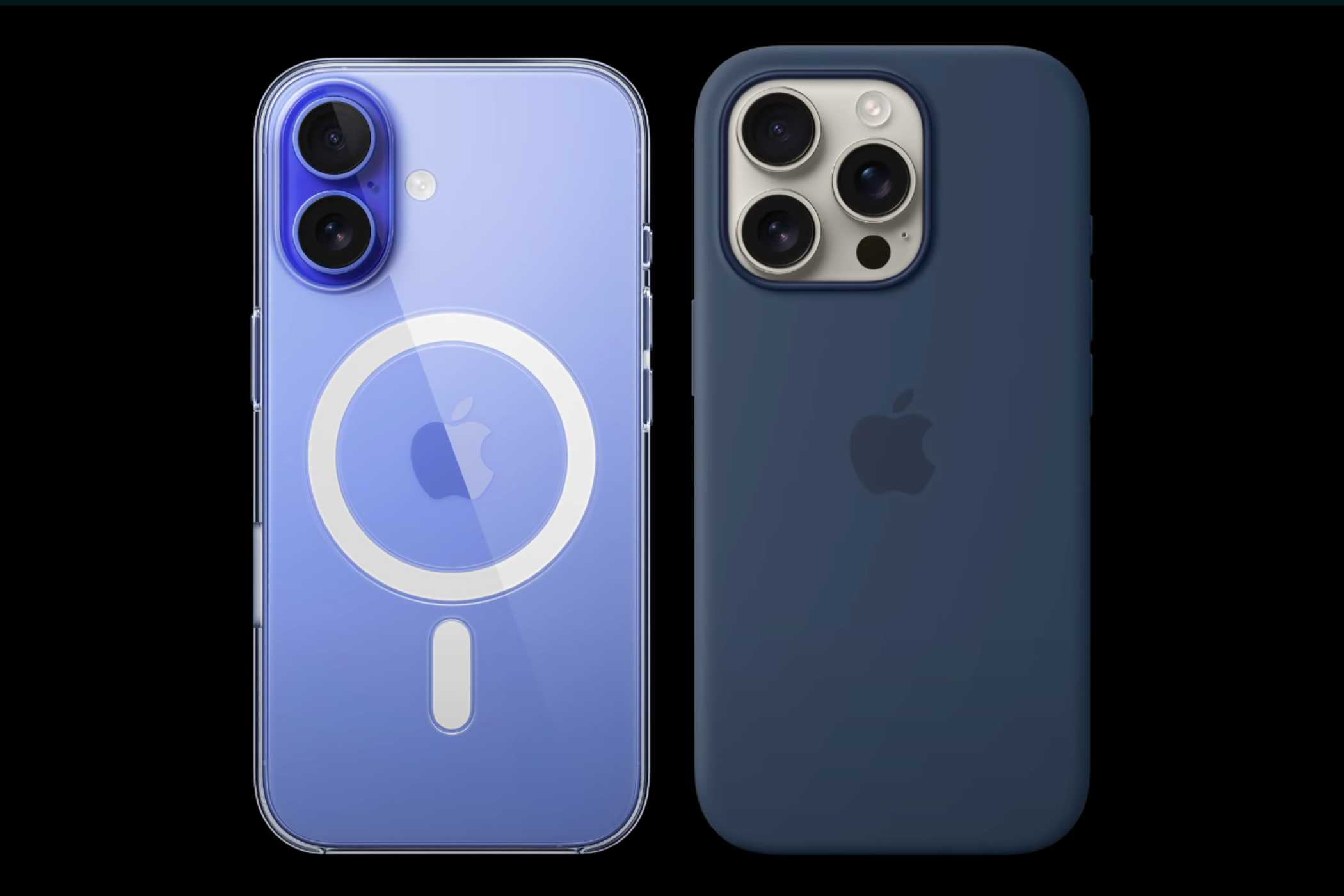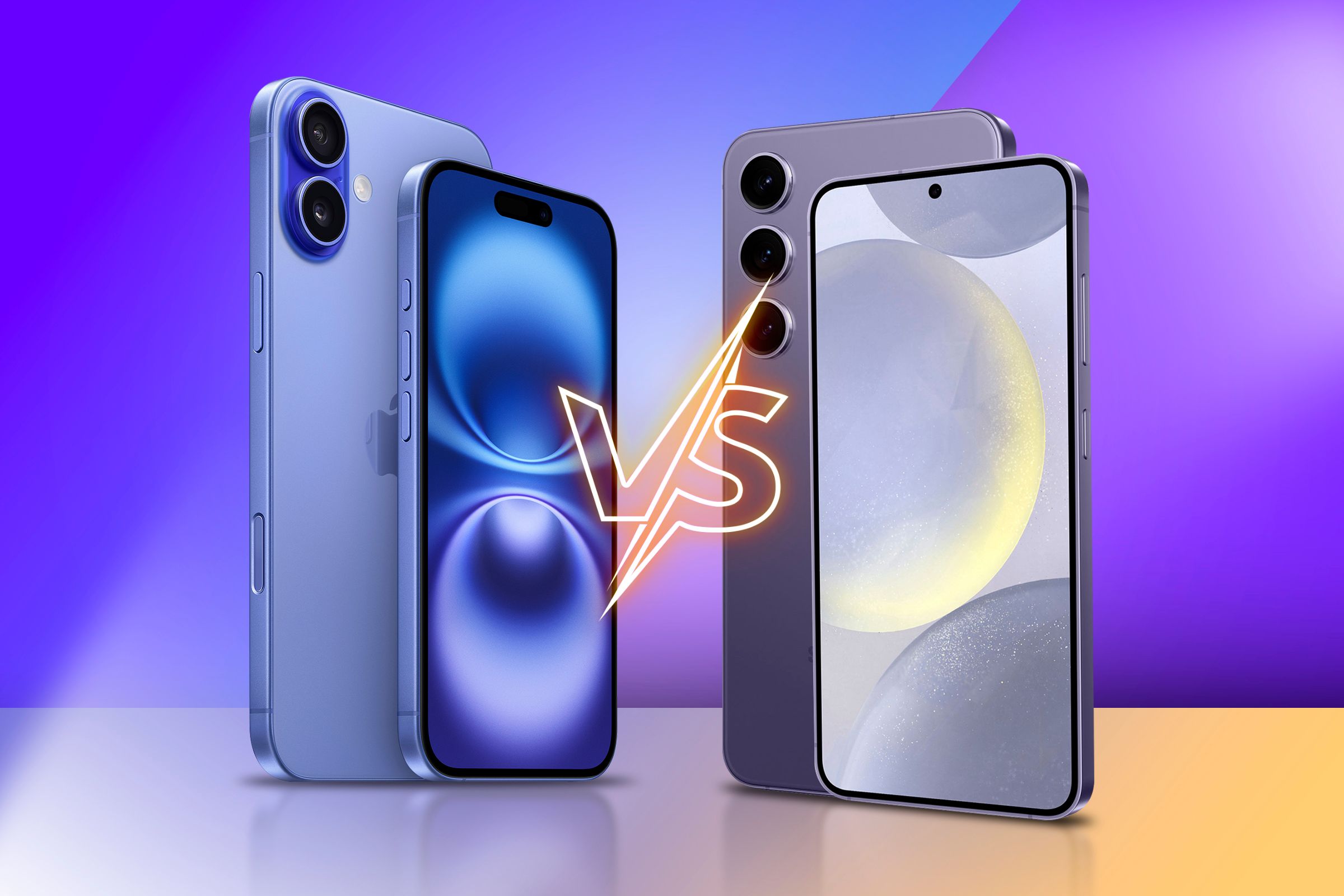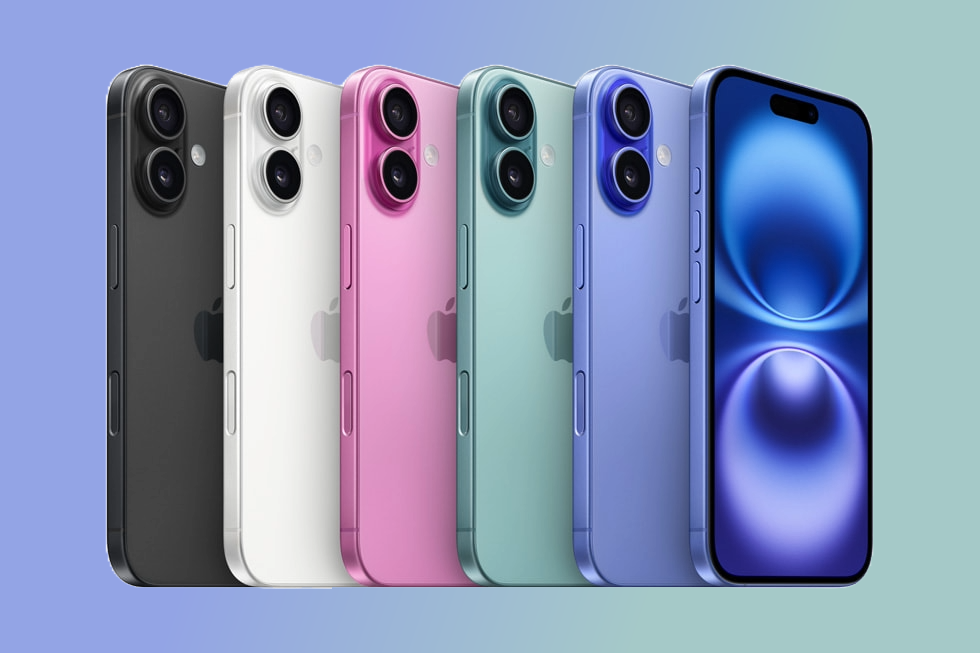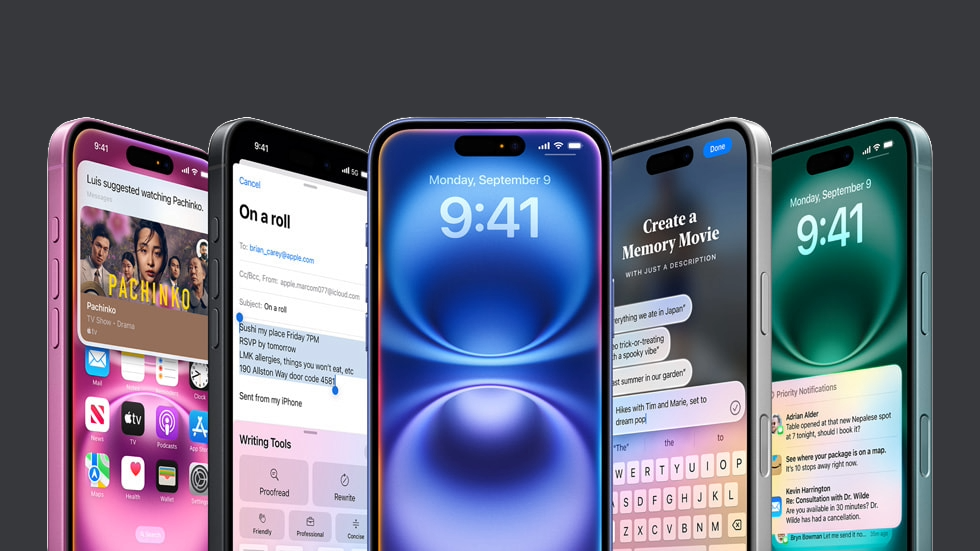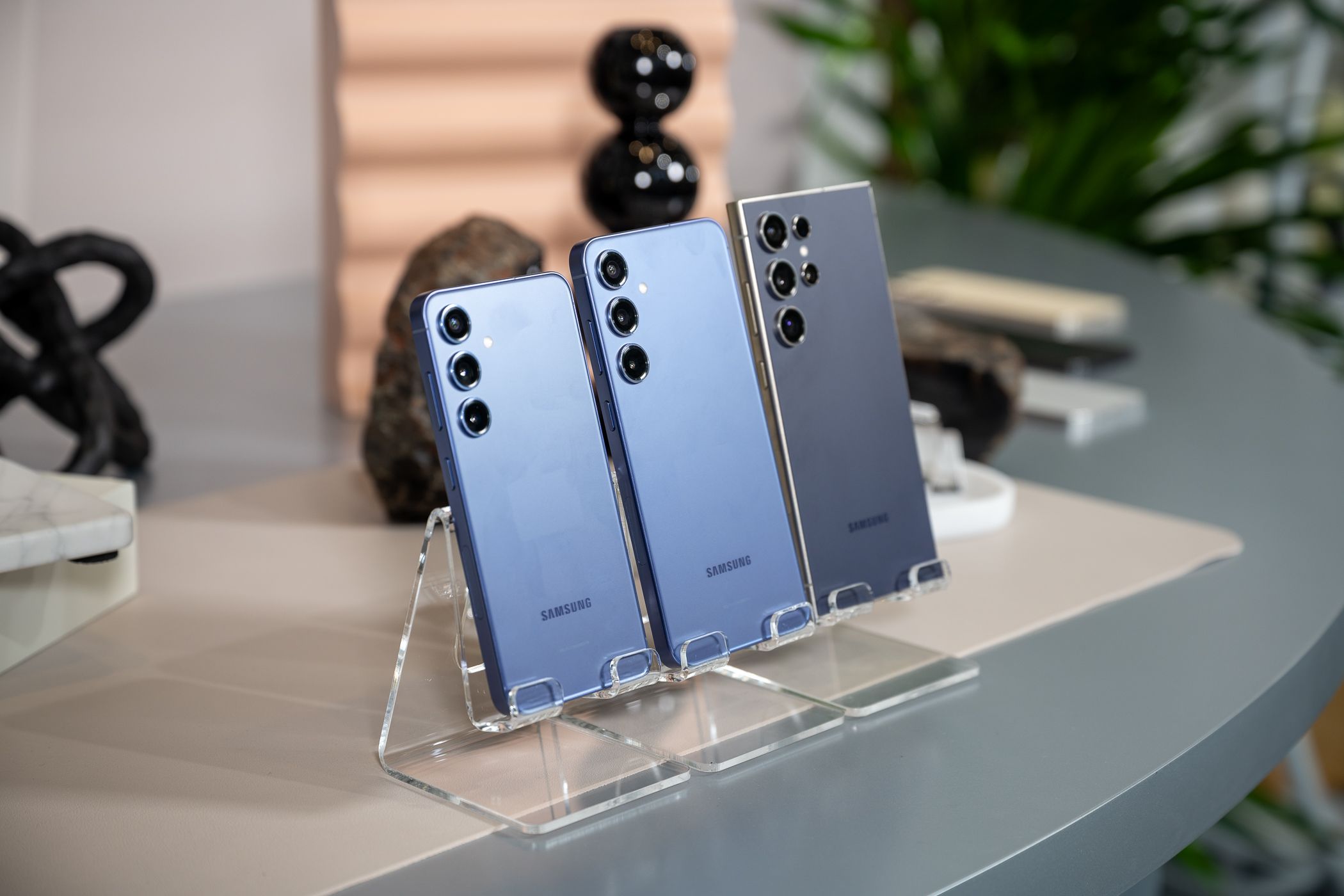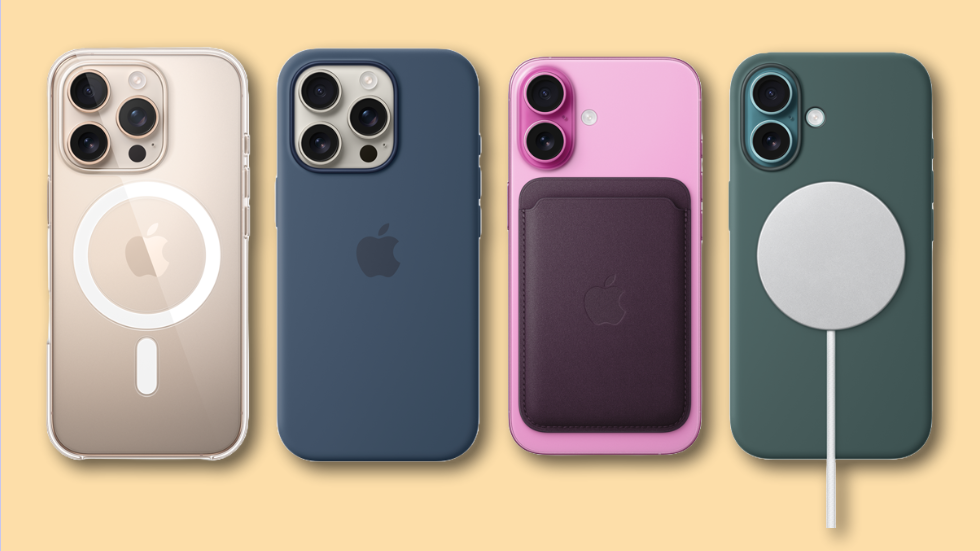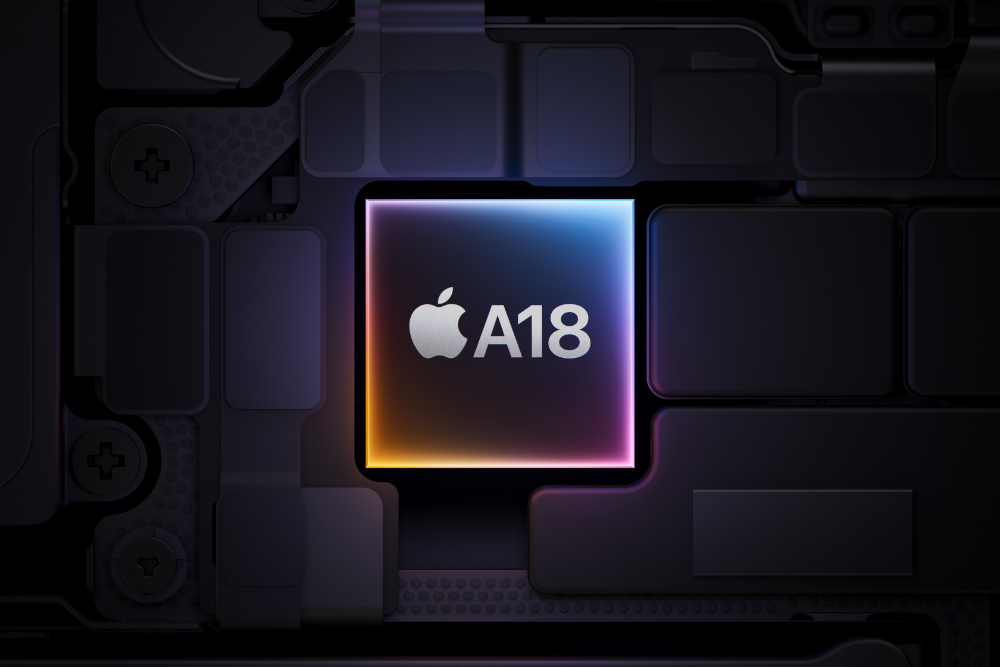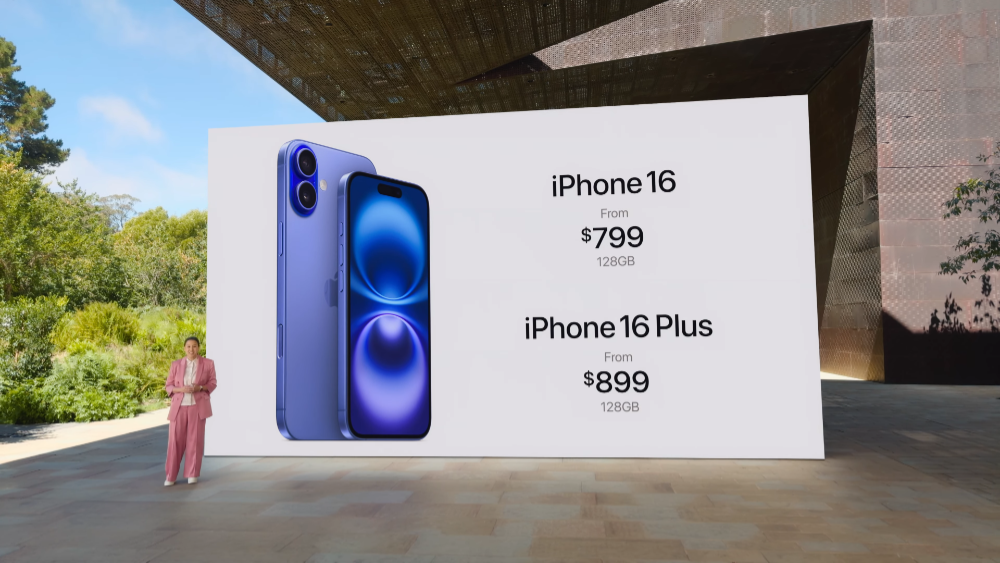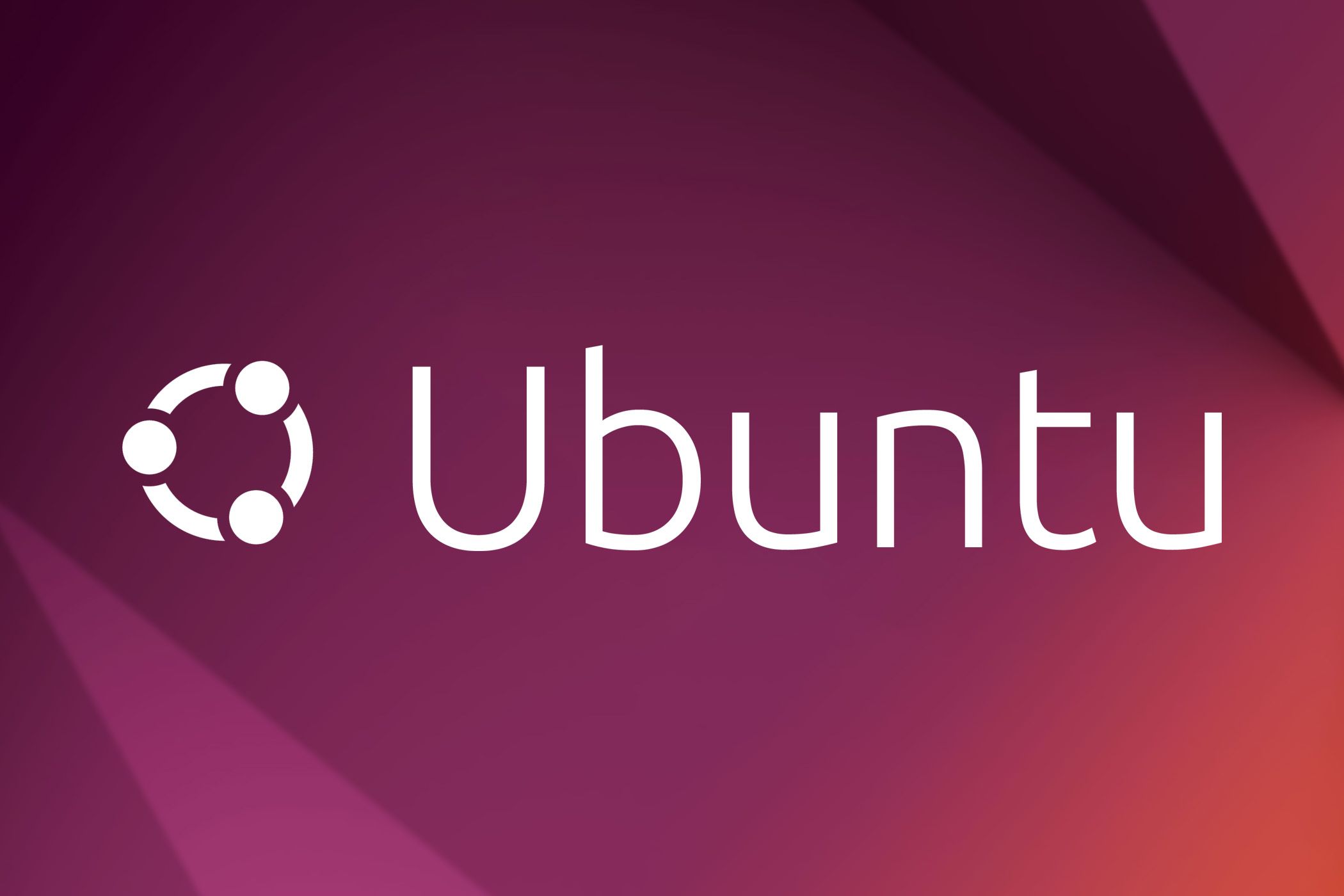iPhone 16 vs. Samsung Galaxy S24: How Do the Base Models Compare?
iPhone
Quick Links
-
The Designs Are Very Similar
-
Both Have Large and Bright Displays
-
The S24 Has a Telephoto Lens
-
Samsung Has a Bigger Battery But Slower Wireless Charging
-
Both Smartphones Use Cutting-Edge Hardware
-
Samsung and Apple Each Have an AI Solution
-
Both Models Start at $800
Key Takeaways
- The iPhone 16 and Galaxy S24 share many commonalities including similar designs, a focus on class-leading power, AI features, excellent camera systems, and the same price point.
- The iPhone is stuck with a 60Hz screen compared to the S24, is rated for lower battery life, but leans more heavily into AI features.
- The S24 pulls ahead with a telephoto lens, 120Hz display, but lacks the iPhone 16’s 25W wireless charging.
- Ultimately there’s more to hardware at stake, and your preference for Apple and Samsung’s ecosystem (or iOS and Android) will be more important than the raw numbers.
The iPhone 16 is upon us, so how does it compare to 2024’s Samsung Galaxy S24? In this battle of the base models, knowing the differences and similarities is crucial. Let’s dive into the details and help you decide which one suits you best.
The Designs Are Very Similar
It’s no secret that most smartphones these days look pretty similar. At first glance, both the Galaxy S24 and the iPhone 16 are rounded, rectangular phones with a notch at the top for the front-facing camera. So far, so good.
On the iPhone side, it’s rocking the same aluminum casing as its predecessors. It comes in five different colors, including black, white, pink, teal, and ultramarine, and weighs 6.07oz (172g). There are some upgrades, though, with a new Action button replacing the mute switch, and a new dedicated Camera Control button.
The Galaxy S24, in contrast, has a few more color options to choose from: black, gray, violet, yellow, orange, blue, and green. Like the iPhone 16, it comes wrapped in an armored aluminum frame. As standard, it has the usual volume buttons and side key (largely used for power), but nothing else. It weighs 5.93oz (168g), so it’s slightly lighter than the iPhone 16.
If you’re worried about the size, then the iPhone is the bigger model here, but only just. The iPhone is a little bit taller, wider, and thicker than its South Korean counterpart, but the difference is so small that it’s barely noticeable.
Both Have Large and Bright Displays
There are some modest differences between the iPhone 16 and the Samsung Galaxy S24 on paper when it comes to display tech.
The iPhone 16 is slightly bigger, but the S24 has a larger 6.2-inch AMOLED screen, compared to the iPhone’s 6.1-inch OLED screen. Samsung’s AMOLED display can adjust its refresh rate up to 120 Hz, while the iPhone 16’s refresh rate stays at 60 Hz. Unlike the Samsung, the iPhone 16 doesn’t have an always-on display.
The iPhone 16 has a slight edge in pixel sharpness, with 461 pixels per inch (PPI) compared to the Samsung S24’s 416 PPI. However, the Galaxy S24’s screen is brighter, with a max brightness of 2600 nits versus 2000 nits on the iPhone. Both phones support HDR.
This last point comes down to personal preference. Apple’s Dynamic Island combines the front camera and Face ID sensors with alerts, while the Samsung S24 has a small cut-out for the front camera at the top. The Dynamic Island may take up more space, but it’s in an area of the screen that isn’t very useful on either phone.
The S24 Has a Telephoto Lens
Both Samsung and Apple have thrown the kitchen sink at providing professional quality camera functionality in both the iPhone 16 and Samsung Galaxy S24.
The iPhone 16 comes with a 48MP primary camera for standard photography and a 12MP ultrawide camera for wide-angle shots. There’s also the same 12MP TrueDepth front-facing camera that Apple included in the iPhone 15. One change that Apple has introduced is a new, dedicated Camera Control button for quickly taking snaps and changing camera settings.
On the Samsung Galaxy S24, you’ll see a slightly better 50MP main camera and a 12MP ultrawide, along with a 10MP telephoto camera for a three-times optical zoom. Like the iPhone 16, there’s also a 12MP front-facing camera.
On paper, Samsung nudges ahead with a higher resolution main camera, but until we see real-world shots, it’s going to be very difficult to tell these apart.
Samsung Has a Bigger Battery But Slower Wireless Charging
Battery—always a compromise for the base models versus the flagships, and there’s no difference here. There’s more to be had with an iPhone 16 Plus or a Samsung Galaxy S24 Ultra, but the base models hold their own here.
The S24 comes with a 4,000mAh battery as standard, along with 24W wired charging and Qi2 wireless charging at 15W. Samsung claims the S24 comes with up to 29 hours of battery life during video playback, too. Our colleagues over at Android Police found that the battery itself lasted around 8 to 10 hours with adaptive brightness switched on without needing a charge.
For the iPhone 16, Apple is claiming up to 22 hours of video playback time but there’s no data yet on how big the battery is. Apple does say it’ll support 25W wired charging with MagSafe, which is better than the S24. If you grab a 30W USB-C charger, you’ll see a 50% charge in 30 minutes via MagSafe.
Both Smartphones Use Cutting-Edge Hardware
The iPhone 16 comes with Apple’s new A18 all-in-one chip that offers huge performance gains over the A16 Bionic it replaces. According to Apple, the A18 is 30% faster in CPU performance and 40% faster in GPU performance than the A16 Bionic, as well as a 16-core Neural Engine processor that offers two times the performance to help power its new Apple Intelligence functionality.
Other than that, the base iPhone 16 comes with 128GB, 256GB, and 512GB storage options, but it hasn’t disclosed how much onboard memory it’ll have. The storage matches that offered by Samsung with the base S24 model, except that the S24 lacks a 512GB version. The S24 does come with 8GB of RAM, however.
The S24 uses a different system on a chip depending on your location. It comes with a Qualcomm Snapdragon 8 Gen 3 in North America or Samsung’s own Exynos 2400 chip in the rest of the world. The Qualcomm model is an octa-core CPU, while the Exynos 2400 is a deca-core. That’s plenty of power for gaming and AI.
Either way, there’s some serious power in both phones here, and you’re unlikely to notice a difference between them.
Samsung and Apple Each Have an AI Solution
The iPhone ships with iOS 18 and, as it’s AI season, it’s no surprise to see a wealth of AI functionality appear front and center. Apple Intelligence dominates new features here, with Apple integrating ChatGPT-style chatting into Siri to make it more powerful. There are also AI tools for image editing and creation, writing, and productivity.
Samsung introduced Galaxy AI functionality with the S24 series. Like the iPhone 16, there are AI writing image and editing tools, but Samsung’s approach is far more subtle than the all-in approach that Apple is taking with the iPhone 16. The S24 is running the latest version of Android 14 using Samsung’s One UI 6.1 overlay.
Samsung is committed to supporting the Galaxy S24 series with new OS and security updates for seven years. There’s no clear indication yet of how long Apple intends to support the iPhone 16, but a minimum of five years is expected.
Both Models Start at $800
The iPhone 16 will be available for pre-order from September 13, 2024 and will hit Apple’s own stores from September 20, 2024. It’ll cost you $799 for the base 128GB storage model.
The Samsung Galaxy S24 launched back on January 31, 2024, and is already on sale. Like the iPhone 16, the base S24 with 128GB of RAM costs $799.99.
|
iPhone 16 |
Samsung Galaxy S24 |
|
|
128GB |
$799 |
$799.99 |
|
256GB |
$899 |
$859.99 |
|
512GB |
$999 |
N/A |
Trying to choose between the iPhone 16 and the Samsung Galaxy S24 will depend on what you’re looking for and where you’re coming from. They’re excellent phones, but they’re incremental upgrades from last-gen models. You’re going to have to look at it through that prism, and you’re unlikely to want to upgrade from an S23 or an iPhone 15 unless you’re really looking for AI.
For Android and iPhone users switching sides, there’s a big culture shock to contend with. Both models are priced roughly the same, but iOS 18 is leaning more heavily towards AI than Samsung right now. Features like the new Camera Control button could have their advantages for regular snappers, but it’s a nicety, not a deal breaker.
What we know right now is that the same, endless battle continues to be fought between these two smartphone behemoths, and you won’t lack power or performance with either.
-
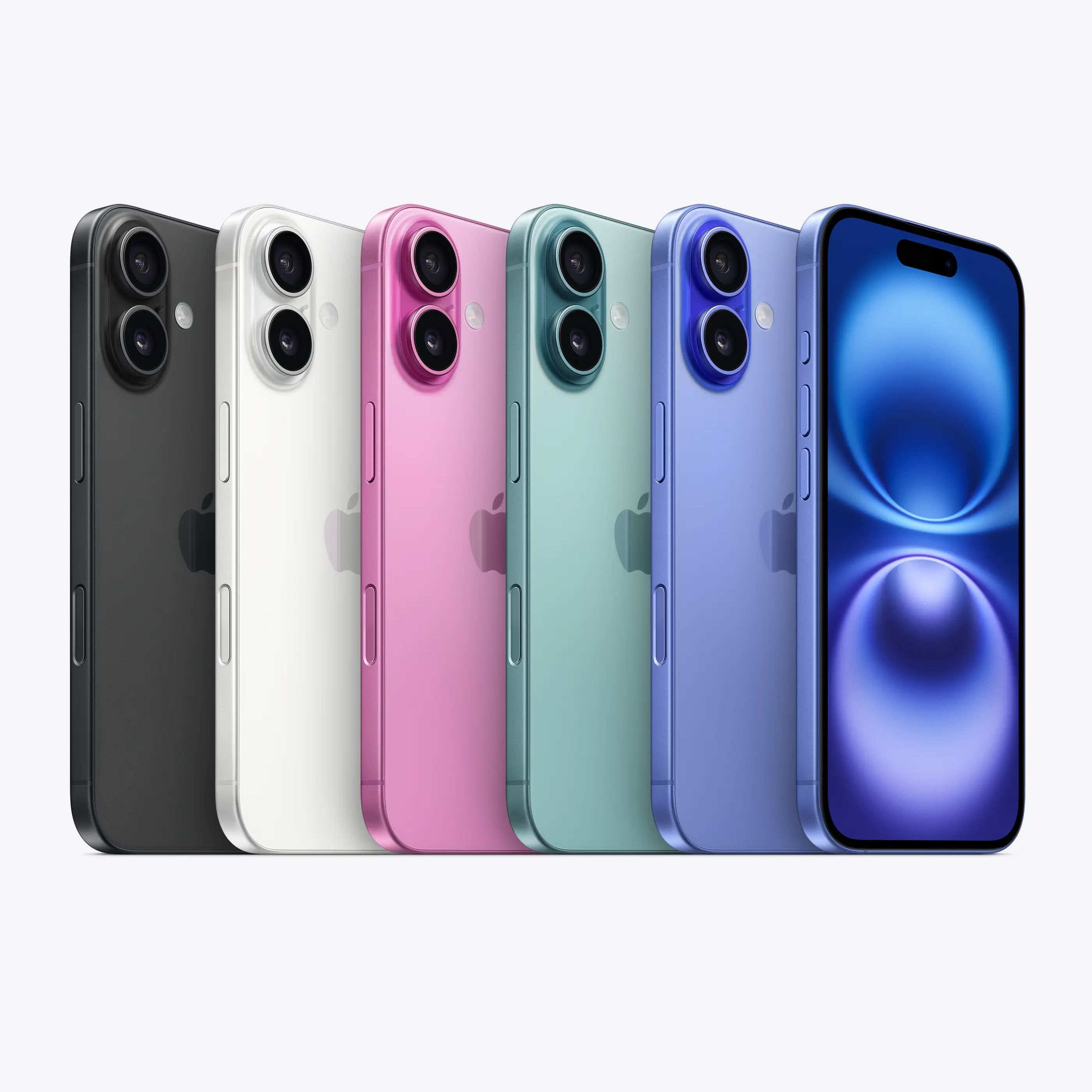
Apple iPhone 16
Apple’s newest iPhone featuring a camera button, programmable action button, and artificial intelligence features.
See at Apple -
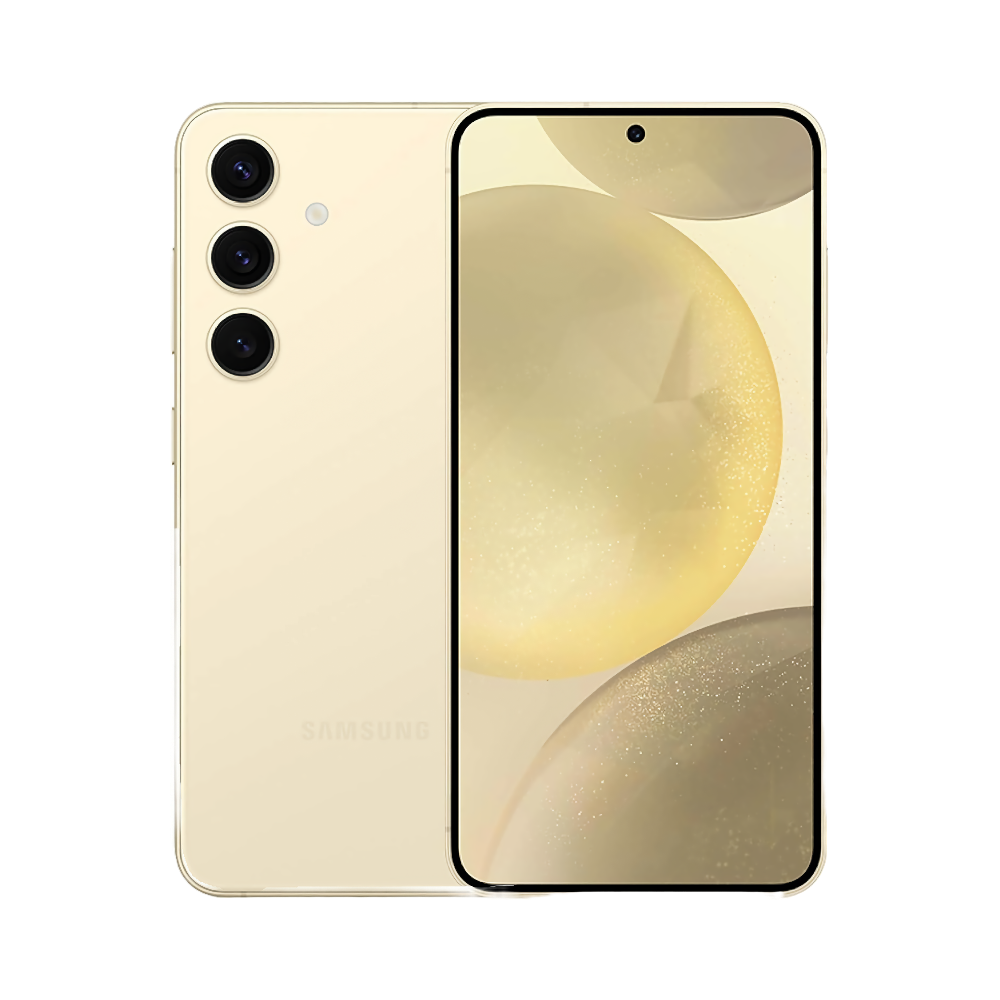
Samsung Galaxy S24
The Samsung Galaxy S24 may be the smallest in the line, but it has big-time processing power and a fantastic camera, perfect for selfies, group shots, and more.
Buy on Amazon









